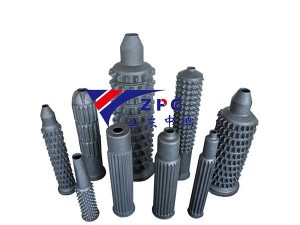In many fields such as industrial production and energy development, high temperature environments are often the ultimate test of material performance. Among numerous high-temperature resistant materials, silicon carbide has become a “leader” in dealing with extreme high-temperature challenges due to its excellent heat resistance performance, and is widely used in key industries such as aerospace, new energy, metallurgy, etc.
What kind of material is silicon carbide? Essentially, it is a compound composed of carbon and silicon elements, which exists in the form of a rare mineral called “moissanite” in nature and is often obtained through artificial synthesis in industry. The most prominent advantage of this material is its super high temperature resistance. Even in high temperature environments of thousands of degrees Celsius, it can maintain stable physical structure and chemical properties, and will not soften or deform like ordinary metals, nor will it easily react with other substances.
Why does silicon carbide have such excellent high-temperature resistance? The core reason lies in its unique crystal structure. The atoms of silicon carbide are tightly bonded by extremely strong covalent bonds, forming a stable three-dimensional network structure, like building a sturdy ‘microscopic castle’. This structure makes it difficult to be damaged at high temperatures, not only able to withstand drastic temperature changes, but also resistant to oxidation and corrosion at high temperatures, providing reliable guarantees for the stable operation of equipment in extreme environments.

In practical applications, the high temperature resistance of silicon carbide plays an irreplaceable role. In the field of new energy, it is used to manufacture high-temperature resistant semiconductor devices, which helps to promote the efficient operation of industries such as new energy vehicles and photovoltaic power generation; In the aerospace field, it is a key raw material for manufacturing engine components and spacecraft thermal protection materials, helping equipment withstand extreme high temperatures generated during high-speed flight; In the metallurgical industry, refractory materials made of silicon carbide can withstand high temperature erosion in furnaces and extend the service life of equipment.
With the continuous advancement of technology, the application scenarios of silicon carbide are still expanding. This seemingly ordinary material, which contains a powerful “heat-resistant gene”, is providing support for various industries to break through the bottleneck of high-temperature technology with its unique advantages, and has become an important force in promoting industrial upgrading and technological innovation. In the future, with the continuous improvement of material performance requirements, silicon carbide will surely shine in more high-end fields and write a new chapter in high-temperature resistant materials.
Post time: Nov-04-2025